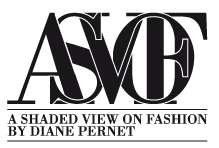David Dehaineault is a French artist born under the sign of Pisces, which you might almost guess when you encounter his welcoming heart and his eternal desire for sharing emotions through his work of art. I visited his atelier last Friday, which is probably the best seat to admire his pieces as they spread around effortlessly, cohabiting with older canvases, upcoming cut-outs, boxes full of colours and books printed by the artist, featuring documenting photography, sometimes of micro details that are full of meaning on a daily basis for Dehaineault and his most intimate circle.
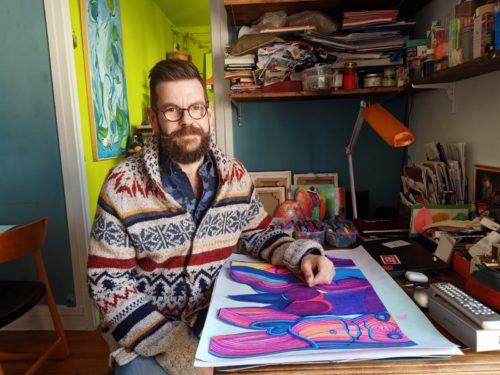
I sat with the artists and conducted a pretty essential interview, in the hopes of introducing his work to those who might still be unaware of it, and to those of us who know, who have been able to appreciate his work in real life, his words might create a beautiful background to complete the artist’s universe.
Ivo Barraza Castaneda: my first question -maybe you’ve been asked quite a few times- but when did you start immersing in the world of art? When? How? What initiated you?
David Dehaineault: Well, listen! It’s a long story, it all started a very long time ago. Back when I was a teenager and thanks to a professor I had, who organised a workshop on Wednesday mornings…
IBC: Teacher of what subject?
DD: He was my fine arts’ teacher. He organised this workshop with a very select group of students with whom he felt he could go deeper proposing exercises and artistic challenges. The workshop was quite strict, you didn’t really have a chance to skip sessions, no breaks in between… We were less than ten students, and the idea was that we explored different media of expression, that’s also when I started exploring the idea of a constant photographic urban documentation, for example. I remember one of the exercises that touched us the most, we projected famous artworks on the doors of the school and we painted them in a very abstract, black and white manner. At the end of school, this same professor invited me to assist in a workshop we used to lecture on Tuesday nights, where he taught exclusively oil painting and I actually participated inside this workshop during seven years, that’s really where I learned painting, I would say. I first learned oil painting of course, empirically; because at the beginning I only had the right to come to the workshop and observe, next I got the right to clean the tools, and definitely a highlight of the experience was that after every workshop there would be a little gathering where we ate desserts and had a drink. I was a teenager surrounded by adults, you have to think that this is my first memory of a glass of wine… Then little by little, I was allowed to prepare canvases, prepare the painting, paint the background of somebody’s painting, until I finished doing details for other artists. Eventually they gifted me my own tubes of painting, my own canvases and this is when I really started doing my own work. I was quickly attracted by color and abstract forms which I explored for about ten years, until my early thirties.
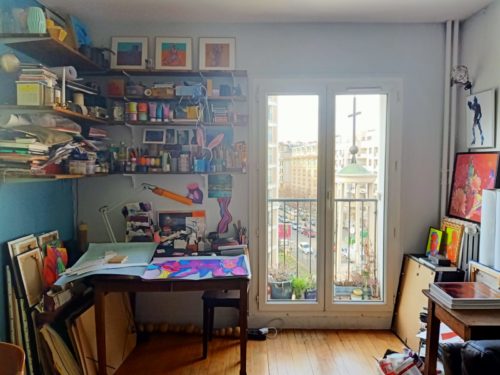
IBC: How do you arrive to the actual form of your artwork? I mean where the human model is absolutely present and almost imperative.
DD: I met a group of women who used to practice life drawing.
IBC: In Paris?
DD: In Normandie. They moved around too, we worked together in Bretagne, we exposed once in Dubai, in the gallery of a French Fashion School, ESMOD. When I was there I went to visit exhibitions, without any idea of what I was going to find. I found a lot of portraits, but they were so moving, full of emotion, truly romantic. Along with a good friend of this time we started trying to imagine the life of the person who drew these portraits. We talked about a woman with some 50 years on her shoulders, who probably endured hard challenges in her life, a husband who doesn’t understand. To our surprise this person was right behind us, listening to us and at the end of our conversation she introduced herself, putting a hand on my shoulder and saying “I introduce myself, my name is Yolanda and you already know everything about me”, she was in tears, touched by the narrativity of her own drawings. So it was around this group of women that I discovered life drawing. Of course, soon I started using my own tools and colours to draw the models. There are actually very few of us who practice life drawing in Paris.
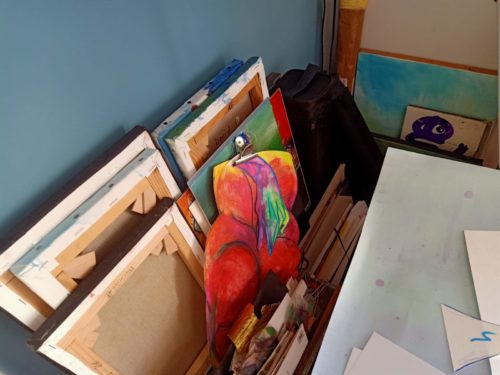
IBC: You have told me that the idea of having a public is really imperative for you, that it gives sense to the oeuvre. In your process of creating, does this public play a roll in your mind?
DD: Effectively, when you are an artist -you know this very well yourself- you work for others, also for your own technical or intellectual pleasure… But above all personal pleasure, your work is destined to others, I have no interest to accumulate my drawings or not to share them at all or even separate from them. I love sharing things, giving emotions, on social media or wherever it is.
IBC: and this public, is it present in your mind when you are creating, does this public exist in your mind do you visualise them?
DD: Yes, sometimes consciously, sometimes unconsciously. Sometimes I also get one of a kind orders, which is a very specific public who will give me a brief of their wish and I will try to answer to it the best I can with my savoir faire, in that case the roll of the audience is more present. But even in a more general way, there is definitely a pleasure of imagining the audience when I work on a project, how it will be received, the surprise, the expectation, the promise of an intense pleasure.
IBC: Does it happen to you that the idea you were trying to communicate doesn’t match what the public reads in your work?
DD: More than 50 percent of what I want to express usually arrives out of place. But in that sense, sometimes the visitor of an exhibition can show me a way of understanding my own work in a way I had not seen before. It can be a very rich exchange, very strong emotions often arise from that exchange.
IBC: That’s interesting! I think it’s important that art does exactly that: that it intrigues you to a point of questioning what you see, what you feel…
DD: Who you are…
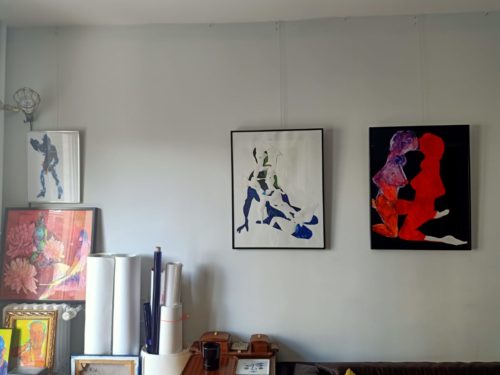
IBC: Can you point out some other moments, people who influenced your way of working?
DD: I have a pictorial and visual journey like a lot of people, museum visits, exhibition visits, discovering Matisse’s drawings…
IBC: How did you discover Matisse actually?
DD: In a drawing fair in the Palace de la Bourse, my very first experience with him was by observing a true work of his in person, not in a screen or a book, but really one of his drawings in person. But that’s a very classic reference. Nowadays There are works of contemporary drawing, very experimental, like the drawings of Lionel Sabaté, who is a French artist who works a lot with drawing by using very experimental media like hair or dust, achieving portraits of such depth and humanity, so maybe today that is the type of concept that influences me.
IBC: So it’s really the universe of art in general.
DD: Live spectacles, music, all emotions we can feel among others, in a cultural context but yes.
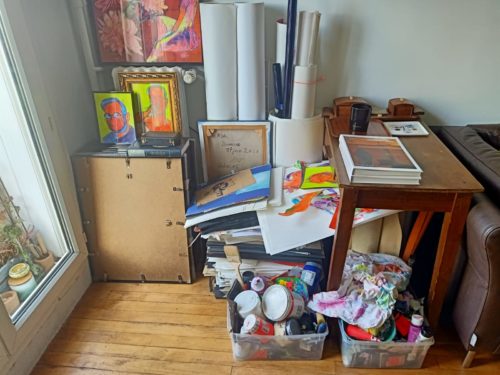
IBC: and finally can you talk to me about your current project in development?
DD: … Currently the project that is taking my time the most is a drawing workshop I conduct in SAJH, it’s a place that welcomes adults with some sort of mental difficulty, so it’s people who form filters and obsession. The workshop is largely based on my personal artistic practice, the life drawing. We work the notion of the self, the self portrait, and it’s really great, it’s a conceptual work for me. It’s a group effort in a sense and yet requires deep individual concentration. The idea is also to stimulate their social capabilities. One of the filters -without revealing the intimacy of one of the participants- that in fact I found the most creative was when I asked one of the participants to trace a line on her sheet of paper. The result was a pointed discontinuous line. I found that extremely marvelous. I can ask them to color a surface, for most people that would mean to fill out the space in a solid color, but for someone in the workshop that might mean to fill the surface with spots of color. This must not be confused with art brute, because we are not trying in any way to create works of art, it’s just people who appreciate working in a group around the idea of drawing, but have no intention to create works of art. So the idea is to experiment through their own filters, and to show them that their filters are not…
IBC: It’s really admirable!
DD: Yes! I show them for once in their lives that these filters are a creative virtue.
